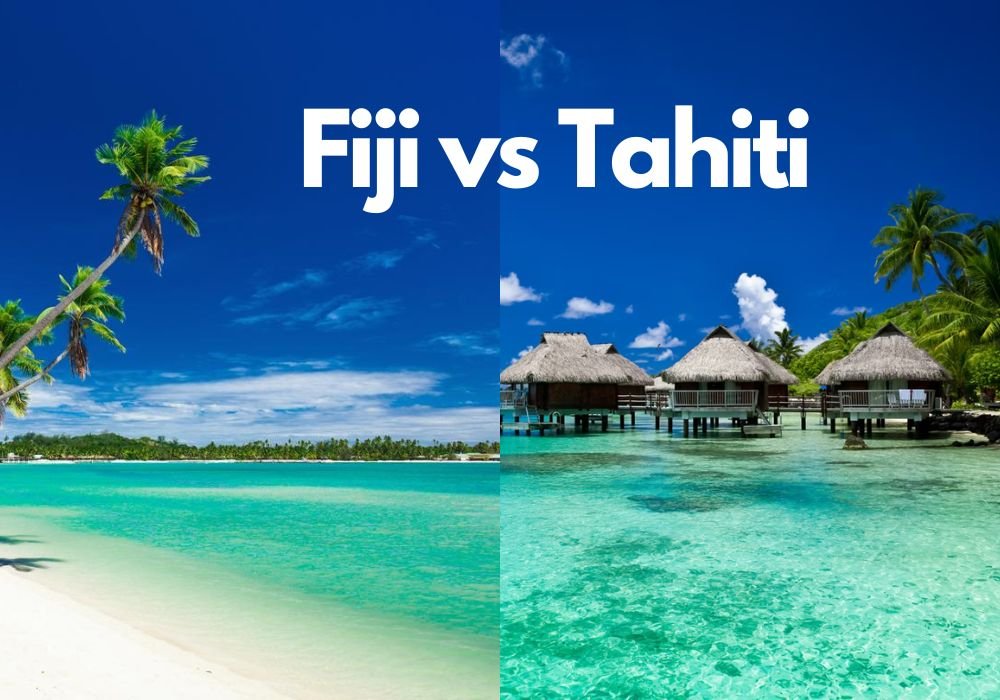
Fiji vs Tahiti – Want to discover which is the best destination to visit on your next holiday?
The South Pacific, a vast expanse of azure waters, is dotted with islands that epitomize paradise.
Among these, Fiji and Tahiti emerge as crowning jewels, each offering unique allurements to travelers seeking solace, adventure, and unparalleled natural beauty.
The allure of these destinations lies not just in their postcard-perfect beaches but also in their rich cultural tapestries, diverse ecosystems, and the warmth of their people.
As premier island destinations, Fiji and Tahiti are often spoken of in the same breath, drawing travelers into a delightful conundrum of choice.
Fiji, with its archipelago of over 300 islands, is renowned for its vibrant culture, lush landscapes, and coral reefs teeming with marine life.
It’s a place where traditional ways of life merge seamlessly with modern leisure, offering something for every type of traveler.
On the other hand, Tahiti, the largest in a chain of islands that make up French Polynesia, offers a blend of Polynesian tradition and French sophistication, set against the backdrop of dramatic volcanic landscapes and turquoise lagoons.
When considering Fiji vs Tahiti, both destinations promise an escape into a world of stunning natural beauty and tranquility.
However, they each hold their unique charms and experiences.
This article aims to delve deep into comparing Fiji with Tahiti based on various criteria such as attractions and activities, accommodation and hospitality, culinary experiences, cost of travel, environmental considerations, and more.
Geographic and Cultural Overview
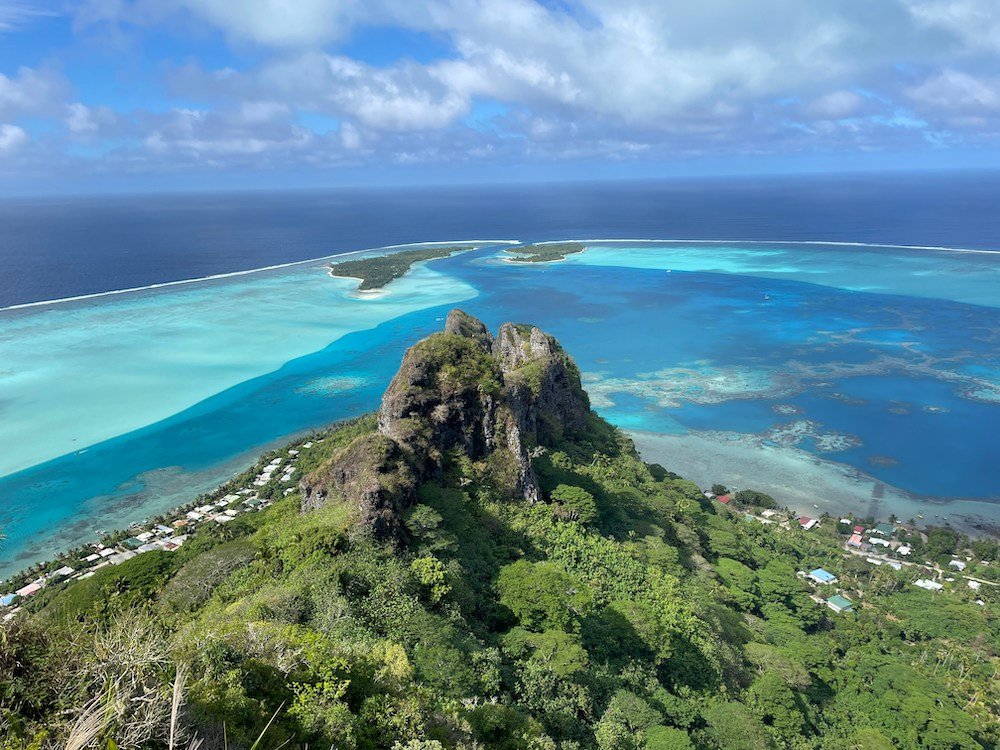
Fiji:
Location, Size, and Geographical Highlights
Fiji, nestled in the heart of the South Pacific Ocean, is an archipelago comprising more than 300 islands and 500 islets, spanning over 18,300 square kilometers.
Viti Levu and Vanua Levu are its largest islands, hosting the majority of the population.
This island nation is celebrated for its rugged landscapes, palm-lined beaches, coral reefs with clear lagoons, and an eco-friendly approach to tourism that highlights its natural treasures.
The geography of Fiji offers a kaleidoscope of natural environments ranging from the serene blue waters of the Yasawa Islands to the lush rainforests and waterfalls of Taveuni, aptly named the ‘Garden Island’.
Cultural Heritage and Traditions
Fiji’s cultural tapestry is vibrant and diverse, with indigenous Fijian, Indo-Fijian, Asian, and European influences.
The traditional way of life is highly evident in Fijian society, with customs and traditions that have been passed down through generations.
The communal and clan systems, known as ‘vanua,’ play a significant role in social organization.
Key cultural experiences include the ‘kava ceremony,’ a ritual involving a drink made from the kava root, and ‘meke,’ a performance of traditional Fijian dance and music.
Fijian hospitality is legendary, encapsulating the spirit of ‘Bula,’ a greeting that signifies health, happiness, and the energy of life.
Tahiti:
Location, Size, and Geographical Highlights
Tahiti is the largest island in French Polynesia, located in the southern part of the Pacific Ocean.
It’s part of the Society Islands archipelago, consisting of two connected landmasses, Tahiti Nui (the larger, western section) and Tahiti Iti (the smaller, eastern peninsula).
The island covers an area of about 1,045 square kilometers, making it significantly smaller than Fiji but no less diverse in its geographical features.
Tahiti is known for its dramatic volcanic landscapes, lush rainforests, and deep valleys, as well as its iconic black sand beaches and the crystal-clear waters of its surrounding lagoon.
Cultural Distinctions and Traditions
Tahitian culture is a rich amalgamation of Polynesian traditions and French influences, resulting in a unique cultural identity.
The Tahitians have a deep connection with their environment, with traditions that celebrate the sea, land, and the spirit of ‘Mana,’ a life force that connects all living things.
Traditional arts such as tattooing, which has a significant cultural and historical significance in Polynesian culture, dance, and music are integral parts of Tahitian life.
The ‘Heiva i Tahiti’ festival, celebrated annually, showcases the best of Tahitian dance, music, and sports, offering a glimpse into the island’s rich cultural heritage.
Comparison of the Cultural and Geographical Landscape of Both Islands
When comparing Fiji vs Tahiti in terms of their geographical and cultural landscapes, both islands offer unique experiences rooted in their natural beauty and cultural heritage.
Fiji’s vast archipelago provides a more diverse range of environments and a glimpse into a lifestyle that’s closely tied to its indigenous roots and communal traditions.
In contrast, Tahiti offers a blend of dramatic volcanic landscapes and rich Polynesian culture, with a touch of French sophistication.
Culturally, Fiji and Tahiti share a deep respect for their traditional heritage, evident in their ceremonies, social structures, and artistic expressions.
However, the essence of their traditions and the ways in which they are practiced and celebrated differ, reflecting their unique historical and cultural trajectories.
While Fiji’s hospitality is centered around the communal and joyful expression of the ‘Bula’ spirit, Tahiti’s cultural identity is deeply connected to the concept of ‘Mana’ and the integration of nature in everyday life.
Attractions and Activities
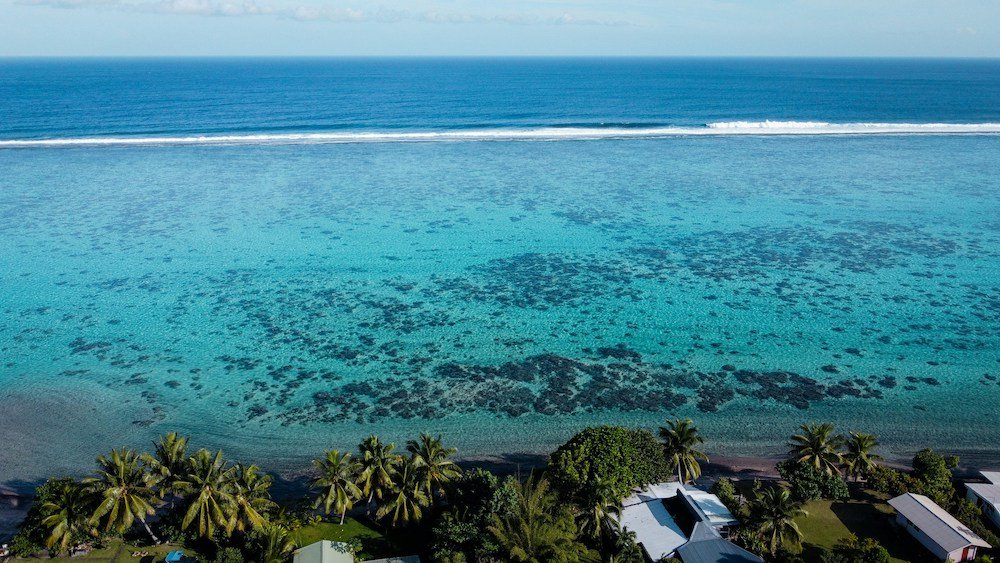
Fiji:
Key Attractions
Fiji’s allure lies in its pristine natural beauty and warm, welcoming culture.
The islands are a haven for beach lovers, with some of the most picturesque beaches in the world, such as those on the Coral Coast and the Yasawa Islands.
The Sigatoka Sand Dunes and the lush Bouma National Heritage Park offer stunning landscapes for nature enthusiasts.
Coral reefs surrounding the islands create a vibrant underwater world that’s accessible right from the shores, making Fiji a top destination for those looking to explore marine biodiversity.
Popular Activities
The clear, warm waters surrounding Fiji’s islands are perfect for a variety of water sports, with snorkeling and scuba diving being particularly popular.
The islands are home to several world-class dive sites where divers can encounter soft corals, reef sharks, and even wreck dives.
For those interested in culture, village tours and cultural shows provide insights into traditional Fijian life and customs.
Adventure seekers can enjoy river rafting, zip-lining, and hiking in Fiji’s rugged terrain.
Tahiti:
Major Attractions
Tahiti is known for its dramatic landscapes, from the lush Papenoo Valley to the stunning Fautaua Waterfall.
The island’s black sand beaches, such as those at Point Venus and Papenoo, offer a unique seaside experience.
Tahiti also boasts a rich cultural scene, with the Paul Gauguin Museum and the Robert Wan Pearl Museum offering glimpses into the island’s artistic and colonial history.
The bustling Papeete Market is a focal point for experiencing local life and cuisine.
Recommended Activities
Surfing is a premier activity in Tahiti, with Teahupo’o on Tahiti’s south shore being one of the most famous surfing spots in the world.
Hiking trails abound, leading adventurers through rainforests to waterfalls and ancient Polynesian temples (marae).
Cultural tours provide deep dives into the traditions of the Tahitian people, including dance, music, and the art of tattooing.
Canoeing and paddleboarding in the lagoon offer serene ways to explore the island’s stunning coastal beauty.
Comparative Analysis of Tourist Attractions and Activities
When comparing Fiji vs Tahiti in terms of attractions and activities, both destinations offer unique experiences that cater to a wide range of interests.
Fiji’s extensive archipelago provides endless opportunities for beach exploration, marine adventures, and cultural immersion within its many islands.
Its coral reefs and accessibility to diverse marine life make it a paradise for snorkelers and divers.
Tahiti, on the other hand, offers a mix of cultural richness and natural wonders.
Its volcanic landscapes, combined with lush vegetation and unique black sand beaches, offer a distinct backdrop for outdoor activities.
The island’s cultural attractions and museums add an educational dimension to its natural appeal.
In essence, Fiji might appeal more to those seeking a broad range of island experiences and water-based activities in a more dispersed setting.
Tahiti could be the choice for travelers looking for a blend of adventure in a dramatic landscape, surfing, hiking, and cultural exploration within a more concentrated area.
Both destinations boast unique attractions and activities that make them stand out in the South Pacific.
Whether it’s the sprawling beaches and coral reefs of Fiji or the volcanic landscapes and rich Polynesian culture of Tahiti, travelers are sure to find their slice of paradise.
Choosing between Fiji and Tahiti ultimately depends on the type of experience one is seeking – be it the diversity and expansiveness of Fiji’s islands or the dramatic natural beauty and cultural depth of Tahiti.
Accommodation and Hospitality

Fiji:
Overview of Accommodation Options
Fiji’s accommodation spectrum ranges widely, catering to all types of travelers.
At the pinnacle are luxury resorts situated on private islands, offering exclusive experiences with overwater villas and beachfront bures (traditional Fijian bungalows).
These high-end options provide exceptional service, gourmet dining, and spa facilities, often with a focus on privacy and intimate settings.
For those seeking more budget-friendly options, Fiji doesn’t disappoint.
There are numerous mid-range resorts, backpacker hostels, and guesthouses, particularly on the main islands of Viti Levu and Vanua Levu, and the popular Yasawa and Mamanuca islands.
These accommodations offer comfortable lodging while still providing access to Fiji’s stunning natural attractions.
Hospitality and Service Culture
Fijian hospitality is renowned worldwide, characterized by the genuine warmth and friendliness of its people.
Visitors are often greeted with a heartfelt “Bula,” symbolizing a welcome into the community.
This spirit of inclusiveness and happiness permeates every interaction, making guests feel at home.
In Fiji, hospitality is not just a service but a way of life, where guests are treated as part of the family.
This deep-rooted culture of kindness and generosity ensures a memorable experience for travelers.
Tahiti:
Range of Accommodation
Tahiti and its islands offer a diverse range of accommodations, famously known for their luxurious overwater bungalows that provide a unique, intimate connection with the island’s crystal-clear lagoons.
These iconic stays, while on the pricier side, promise an unforgettable experience with direct lagoon access and stunning views.
Apart from the luxury segment, Tahiti also offers boutique hotels, which blend local Polynesian charm with modern amenities, and guesthouses known as “pensions,” which are perfect for travelers seeking a more authentic and personal experience.
These options allow visitors to explore Tahiti’s beauty without compromising on comfort.
Service Culture and Hospitality
Tahitian hospitality blends traditional Polynesian warmth with French elegance, creating a service culture that is both attentive and relaxed.
The concept of “Mana,” a spiritual force that connects all living things, infuses Tahitian hospitality with a sense of respect and reverence for guests.
This ethos is evident in the personalized service and attention to detail provided by hosts across all types of accommodations.
Whether it’s in a luxurious resort or a cozy pension, visitors to Tahiti can expect to be treated with utmost care and respect, making their stay deeply satisfying.
Comparison of Accommodation Options and the Hospitality Culture
When comparing Fiji vs Tahiti in terms of accommodation and hospitality, both destinations shine with their unique offerings and service cultures.
Fiji’s wide range of accommodations ensures that every traveler finds a perfect fit, from lavish island resorts to budget-friendly stays, all complemented by the nation’s famously warm hospitality.
Tahiti, with its iconic overwater bungalows and boutique hotels, offers a distinct blend of luxury and authenticity, backed by a service culture that mixes Polynesian traditions with French refinement.
The choice between Fiji and Tahiti may ultimately hinge on the type of accommodation experience one desires.
For those dreaming of staying in an overwater bungalow and experiencing French-influenced Polynesian hospitality, Tahiti is the ideal pick.
Meanwhile, travelers looking for a broad spectrum of accommodation options—from luxury to budget—paired with the unmatched warmth of Fijian hospitality, will find Fiji to be a compelling choice.
Both destinations promise an exceptional stay, where the hospitality and the beauty of the accommodations enhance the overall travel experience.
Whether you’re drawn to the intimate luxury of Tahiti’s overwater bungalows or the diverse offerings and friendly atmosphere of Fiji, both islands offer a gateway to paradise, each with its unique charm and warmth.
Culinary Experience

Fiji:
Traditional Fijian Cuisine and Must-Try Dishes
Fijian cuisine is a delightful blend of tropical flavors and traditional cooking methods, deeply rooted in the island’s rich cultural heritage.
Central to Fijian cuisine is the use of fresh, local ingredients like seafood, coconut, taro, sweet potatoes, and an abundance of tropical fruits.
A must-try traditional dish is “kokoda,” similar to ceviche, made with fresh fish marinated in lime juice and coconut milk.
Another staple is “lovo,” a feast prepared by cooking food in an underground oven, resulting in tender, smoky-flavored meat and vegetables.
Cassava, dalo (taro root), and breadfruit are common sides, often complemented by the rich, creamy flavors of coconut-based sauces.
Best Dining Experiences for Tourists
Fiji offers a variety of dining experiences, from traditional village meals to high-end restaurants in resorts.
For an authentic Fijian culinary experience, visitors are encouraged to partake in a village lovo feast, where they can enjoy traditional foods while engaging with local customs and community life.
Resort dining often incorporates Fijian dishes with international cuisine, allowing travelers to taste local flavors in a more refined setting.
Seafood lovers will find Fiji’s coastal areas and islands to be particularly rewarding, with restaurants serving freshly caught fish and shellfish prepared in a myriad of styles.
Tahiti:
Overview of Tahitian Cuisine, Including French Influences
Tahitian cuisine is a fusion of indigenous Polynesian flavors with French culinary traditions, creating a unique and tantalizing food scene.
The use of fresh fish, root vegetables like taro and breadfruit, and tropical fruits form the basis of the local diet.
A standout dish is “poisson cru,” raw fish marinated in lime juice and mixed with coconut milk, which reflects the island’s love for fresh seafood.
French influences are evident in the presence of baguettes, pastries, and rich sauces that accompany many meals.
The addition of Asian flavors, particularly from Chinese immigrants, adds another layer of complexity to Tahitian cuisine.
Recommended Restaurants and Culinary Experiences
Tahiti, especially in and around its capital, Papeete, boasts an eclectic dining scene.
Visitors can explore the bustling market of Papeete for street food and local delicacies, experiencing the flavors of Tahiti in a lively, informal setting.
For a more upscale dining experience, several restaurants offer a blend of French cuisine with Polynesian ingredients, creating dishes that are both familiar and exotic.
Food tours and cooking classes are also popular among tourists, offering insights into the local culinary traditions and the chance to learn how to prepare Tahitian dishes.
Comparative Taste: Exploring the Unique Culinary Offerings of Fiji and Tahiti
The culinary landscapes of Fiji and Tahiti are both deeply rooted in each island’s culture, geography, and historical influences.
Fiji’s cuisine is characterized by its simplicity, emphasis on communal eating, and the traditional techniques that highlight the natural flavors of the ingredients.
In contrast, Tahitian cuisine offers a complex fusion of tastes, where French culinary sophistication meets the freshness of Polynesian ingredients, resulting in a cuisine that is both refined and boldly flavorful.
Both destinations offer unique culinary experiences that reflect their cultural diversity and abundance of natural resources.
Whether it’s the earthy, smoky flavors of a Fijian lovo feast or the delicate balance of fresh and rich flavors in a Tahitian poisson cru, food lovers will find much to appreciate in both Fiji and Tahiti.
The choice between the two might come down to personal preference: the rustic charm and communal spirit of Fijian dining or the elegant fusion of French and Polynesian cuisine in Tahiti.
Regardless of the choice, the culinary journeys in Fiji and Tahiti are bound to be as memorable as their stunning landscapes.
Cost of Travel
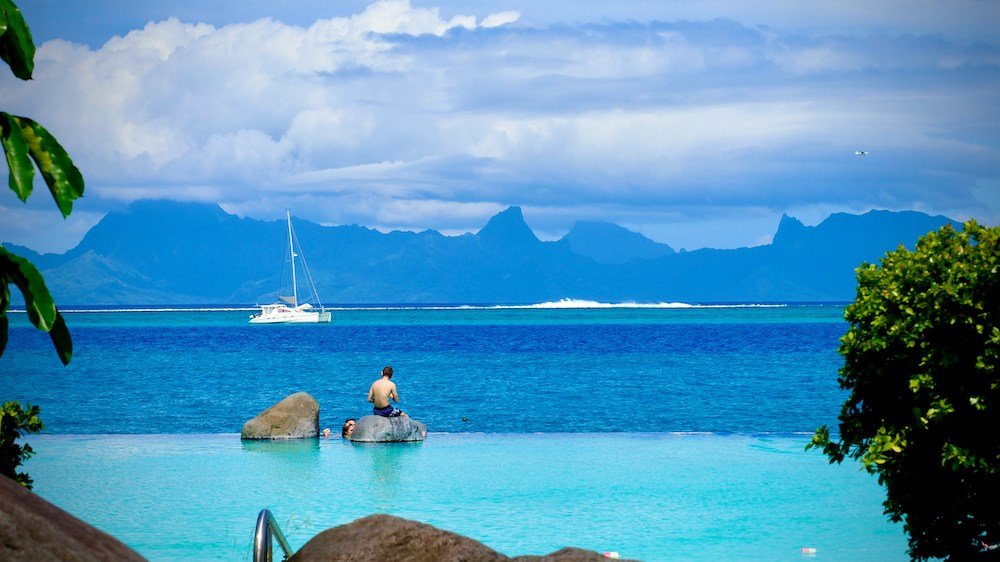
Breakdown of Travel Costs in Fiji and Tahiti
Travel costs in Fiji and Tahiti can vary significantly depending on various factors such as the time of year, type of accommodation, dining preferences, and activities chosen.
Both destinations offer options for travelers across different budget ranges, but it’s essential to understand the breakdown of expenses to plan accordingly.
Comparing Affordability: Accommodation, Dining, and Activities
Accommodation: In Fiji, accommodation options range from budget-friendly guesthouses and backpacker hostels to luxury resorts with overwater villas. Prices can vary widely, with budget accommodations starting from around $20-$50 per night and luxury resorts costing several hundred to over a thousand dollars per night. Tahiti’s accommodation tends to be more on the luxurious side, with a focus on overwater bungalows and boutique hotels. Prices for overwater bungalows typically start from $300-$500 per night, with upscale resorts reaching upwards of $1000 per night.
Dining: Dining costs in both Fiji and Tahiti can vary depending on where you eat. In Fiji, local eateries and markets offer affordable options, with meals starting from around $5-$15 per person. Dining at resorts and upscale restaurants can be more expensive, ranging from $30-$100 or more per person. In Tahiti, dining tends to be pricier, with meals at restaurants costing upwards of $20-$30 per person, and upscale dining experiences can exceed $100 per person.
Activities: Both Fiji and Tahiti offer a wide range of activities catering to various interests and budgets. Snorkeling, hiking, and beachcombing are often free or low-cost activities in both destinations. Excursions such as guided tours, diving trips, and cultural experiences can range from $50-$200 or more per person, depending on the activity and duration.
Tips for Budget-Friendly Travel in Both Destinations
- Travel Off-Season: Consider visiting Fiji and Tahiti during the shoulder seasons or off-peak months when accommodation and flight prices tend to be lower.
- Book Accommodation Wisely: Look for budget-friendly accommodations such as guesthouses, hostels, or vacation rentals, especially if you’re traveling on a tight budget.
- Eat Locally: Opt for local eateries, markets, and street food stalls to experience authentic cuisine at lower prices.
- Plan Activities in Advance: Research and book activities and excursions in advance to take advantage of discounts and avoid last-minute price hikes.
- Utilize Public Transportation: Use public transportation or shared shuttles instead of taxis or private transfers to save on transportation costs.
- Look for Package Deals: Consider booking all-inclusive packages or deals that bundle accommodation, meals, and activities for better value.
- Be Mindful of Extras: Keep an eye on additional costs such as resort fees, taxes, and gratuities, which can add up quickly if not accounted for in your budget.
Best Time to Visit
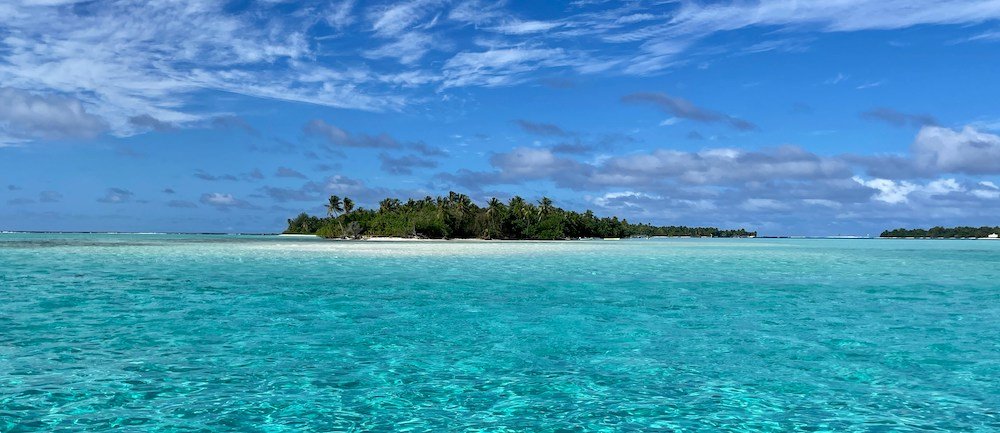
Fiji:
Climate Overview and Ideal Travel Seasons
Fiji enjoys a tropical maritime climate, characterized by warm temperatures and high humidity year-round.
The best time to visit Fiji is during the dry season, which typically runs from May to October.
During these months, the weather is generally sunny with lower humidity and minimal rainfall, making it ideal for outdoor activities such as snorkeling, diving, and exploring the islands.
The peak tourist season in Fiji coincides with these dry months, especially from June to September, so expect larger crowds and higher prices during this time.
The wet season, from November to April, brings higher temperatures, increased rainfall, and occasional tropical cyclones, but it can also offer quieter beaches and discounted accommodation rates for budget-conscious travelers.
Tahiti:
Climate Overview and Best Times to Visit
Tahiti experiences a tropical climate with relatively stable temperatures throughout the year.
The best time to visit Tahiti is during the dry season, which extends from May to October.
During these months, Tahiti enjoys sunny weather, lower humidity, and cooler temperatures, making it ideal for outdoor activities like hiking, snorkeling, and sightseeing.
This period also coincides with the peak tourist season when the islands see the most visitors, so booking accommodations and activities in advance is advisable.
The wet season in Tahiti, from November to April, brings higher humidity, occasional heavy rainfall, and the possibility of tropical storms or cyclones.
While the wet season can offer lower prices and fewer crowds, it’s essential to be mindful of weather conditions and potential disruptions to travel plans.
Comparing the Travel Seasons and Weather Conditions of Fiji and Tahiti
Both Fiji and Tahiti experience similar tropical climates, with distinct wet and dry seasons that can influence the travel experience.
The dry season, spanning from May to October in both destinations, is generally considered the best time to visit, offering pleasant weather and optimal conditions for outdoor activities.
However, this period also sees higher tourist numbers and prices, particularly in popular tourist areas.
The wet season, from November to April, brings higher temperatures and increased rainfall to both Fiji and Tahiti, along with the possibility of tropical storms or cyclones.
While this season may deter some travelers, it can offer unique opportunities for budget-conscious visitors to experience the islands with fewer crowds and lower prices.
Ultimately, the best time to visit Fiji or Tahiti depends on individual preferences, budget constraints, and tolerance for weather variability.
Whether you prefer the vibrant energy of peak tourist season or the tranquility of the offseason, both destinations offer unforgettable experiences year-round amidst their stunning natural beauty and vibrant cultures.
Travelling to Fiji and Tahiti
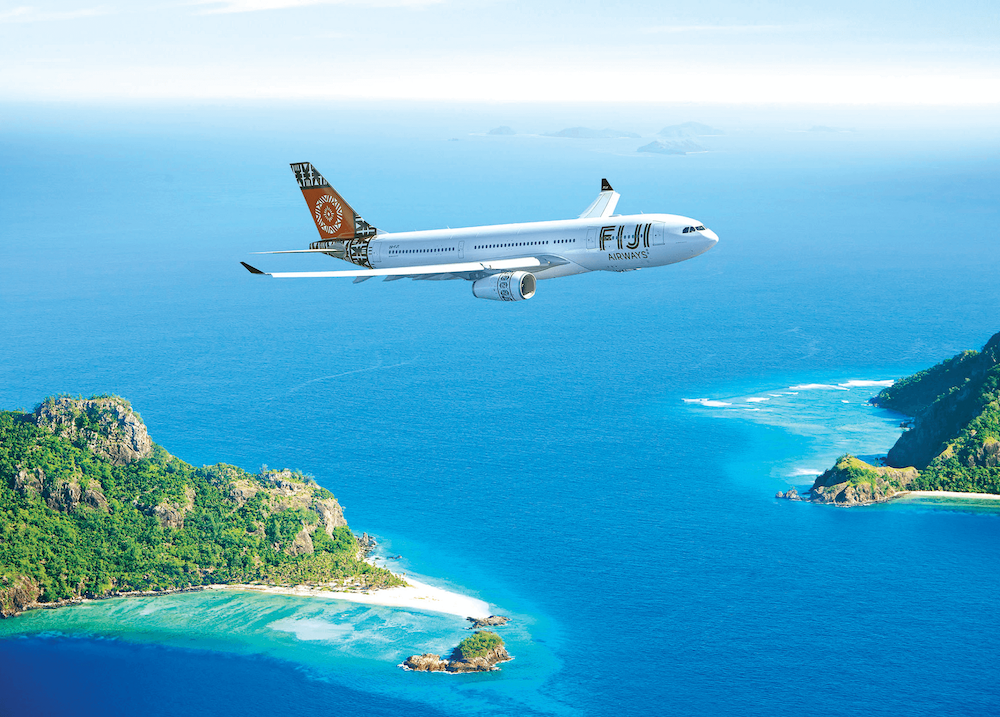
Travel Logistics to and Within Fiji
Getting to Fiji: Fiji is well-connected to major international destinations, with Nadi International Airport (NAN) serving as the main gateway to the country. Many major airlines offer direct flights to Nadi from cities in Australia, New Zealand, Asia, and the United States. Additionally, Fiji Airways, the national carrier, operates flights to and from various international destinations. Travelers can also opt for connecting flights through hubs such as Auckland, Sydney, or Los Angeles. Once in Fiji, domestic flights, ferries, and boat transfers are available for traveling between the islands, with Nadi and Suva serving as major transportation hubs.
Getting Around Fiji: Travel within Fiji is relatively easy, with domestic flights, ferries, and buses connecting the main islands and smaller outlying islands. Nadi and Suva are the main transportation hubs, offering bus services to various destinations across the islands. Rental cars are also available for travelers who prefer to explore independently, although road conditions may vary, especially in more remote areas.
Getting to and Around Tahiti
Getting to Tahiti: Tahiti is served by Faa’a International Airport (PPT), located near the capital city of Papeete. Direct flights to Tahiti are available from major cities in the United States, France, New Zealand, Australia, and other Pacific islands. Air Tahiti Nui and French Bee are the main airlines operating international flights to and from Tahiti. Connecting flights are also available through hubs such as Los Angeles, Auckland, and Paris.
Getting Around Tahiti: Within Tahiti, transportation options include rental cars, taxis, buses, and guided tours. Rental cars are popular for exploring the island at your own pace, although traffic congestion can be an issue, particularly around Papeete. Taxis are available but can be expensive, especially for longer distances. Public buses, known as “Le Truck,” offer a more affordable option for getting around the island, with routes covering major towns and tourist areas.
Ease of Travel and Connectivity Comparison
Both Fiji and Tahiti offer relatively good accessibility and connectivity, with international airports serving as major gateways to the islands.
However, there are some differences in terms of travel logistics and transportation options within each destination.
Fiji’s larger landmass and extensive archipelago require a combination of domestic flights, ferries, and boat transfers for inter-island travel.
While this may add some complexity to travel planning, it also offers opportunities for exploring different islands and experiencing diverse landscapes and cultures within Fiji.
Tahiti, being a smaller island with fewer outlying islands, has a more centralized transportation network, with most tourist attractions and accommodations easily accessible by road.
However, traffic congestion around Papeete can be a challenge during peak hours.
In terms of international connectivity, both destinations offer direct flights from major cities worldwide, although the availability of flights and airlines may vary depending on the traveler’s location.
Overall, while both Fiji and Tahiti offer good accessibility and connectivity for travelers, the ease of travel within each destination may depend on individual preferences and the specific areas being visited.
Whether exploring Fiji’s diverse islands or immersing oneself in Tahiti’s stunning landscapes, both destinations promise unforgettable experiences amidst the beauty of the South Pacific.
Conclusion
After exploring the various facets of Fiji and Tahiti, it’s evident that both destinations offer enchanting experiences that epitomize the allure of the South Pacific.
Let’s recap the key points made throughout the article and offer some final thoughts on choosing between Fiji and Tahiti based on the compared criteria.
Recap of Key Points:
- Geographic and Cultural Overview: Fiji boasts lush landscapes, vibrant culture, and warm hospitality, while Tahiti offers dramatic volcanic scenery, rich Polynesian-French culture, and elegant hospitality.
- Attractions and Activities: Fiji delights with pristine beaches, coral reefs, and cultural experiences, while Tahiti captivates with black sand beaches, waterfalls, and French Polynesian charm.
- Accommodation and Hospitality: Fiji offers a broad range of accommodations and legendary Fijian hospitality, while Tahiti impresses with overwater bungalows and a blend of Polynesian and French service culture.
- Culinary Experience: Fiji showcases traditional Fijian cuisine and communal dining, while Tahiti offers a fusion of Polynesian and French flavors in a refined culinary scene.
- Cost of Travel: Both destinations cater to various budgets, with Fiji offering a wider range of affordable accommodations and dining options, while Tahiti emphasizes luxury and sophistication.
- Best Time to Visit: The dry season from May to October is ideal for visiting both destinations, offering pleasant weather and optimal conditions for outdoor activities.
- Accessibility and Connectivity: Both Fiji and Tahiti are well-connected to major international destinations, with airports serving as primary gateways and various transportation options available for exploring within each destination.
Final Thoughts:
Choosing between Fiji and Tahiti ultimately depends on individual preferences and travel desires.
Fiji appeals to travelers seeking diverse island experiences, warm hospitality, and a more affordable travel experience.
In contrast, Tahiti attracts those interested in luxury overwater bungalows, French Polynesian elegance, and a refined culinary scene.
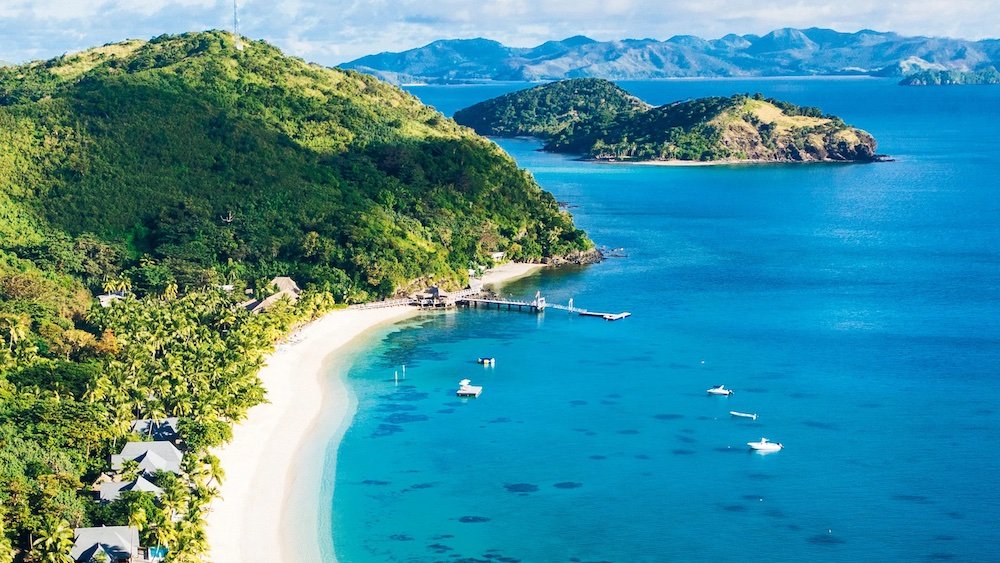
FAQ’s About Fiji Vs Tahiti:
Is Fiji very expensive?
Fiji’s expense largely depends on your preferences and travel style.
While it can offer luxury resorts and upscale dining options that may be costly, there are also plenty of budget-friendly accommodations, local eateries, and activities available.
Overall, Fiji caters to a wide range of budgets, making it accessible to various types of travelers.
Do Australians need a visa for Fiji?
No, Australians do not need a visa for short visits to Fiji.
Australian citizens are granted visa-free entry for stays of up to four months for tourism or business purposes.
What country does Fiji belong to?
Fiji is an independent island nation located in the South Pacific Ocean.
It is not part of any other country and has been a sovereign nation since gaining independence from British colonial rule in 1970.
Can you brush your teeth with tap water in Fiji?
While tap water in urban areas of Fiji is generally safe for brushing teeth, it’s advisable to stick to bottled or filtered water for drinking to avoid the risk of waterborne illnesses, especially in more remote areas.
Is Fiji as cheap as Bali?
Fiji is generally considered more expensive than Bali in terms of accommodation, dining, and activities.
However, Fiji offers a wider range of experiences and accommodations catering to different budgets, while Bali is known for its affordability across the board.
What is the best month to go to Fiji?
The best time to visit Fiji is during the dry season, which typically runs from May to October.
During these months, the weather is generally sunny with lower humidity and minimal rainfall, making it ideal for outdoor activities and beach holidays.
Is Fiji a rich or poor country?
Fiji has a mixed economy, with a significant portion of the population relying on agriculture and tourism.
While there are disparities in income distribution and access to resources, Fiji is considered a middle-income country with ongoing development efforts to improve living standards and economic growth.
What food is Fiji known for?
Fiji is known for its traditional Fijian cuisine, which features fresh seafood, tropical fruits, root vegetables, and coconut-based dishes.
Some popular Fijian dishes include “kokoda” (similar to ceviche), “lovo” (a feast cooked in an underground oven), and “palusami” (taro leaves cooked in coconut cream).
What money is used in Fiji?
The currency used in Fiji is the Fijian dollar (FJD).
It’s advisable to exchange currency upon arrival at the airport or use ATMs to withdraw cash, as credit cards may not be accepted at all establishments, especially in more remote areas.
Is Tahiti closer to Hawaii or Australia?
Tahiti is closer to Australia than Hawaii.
Tahiti is located in the South Pacific Ocean, approximately 4,200 kilometers southwest of Hawaii, while it is about 5,800 kilometers northeast of Australia.
Is Tahiti very expensive?
Tahiti can be relatively expensive, especially compared to other destinations in the South Pacific.
Costs for accommodation, dining, and activities tend to be higher, particularly in popular tourist areas such as Papeete and Bora Bora.
However, there are also budget-friendly options available for travelers willing to explore beyond the main tourist spots.
How do you get from Australia to Tahiti?
There are direct flights available from Australia to Tahiti, with airlines such as Air Tahiti Nui and French Bee operating routes from Sydney and Melbourne to Papeete.
Alternatively, travelers can opt for connecting flights through hubs such as Auckland or Los Angeles.
Is Tahiti and Bora Bora the same?
No, Tahiti and Bora Bora are not the same.
Tahiti is the largest island in French Polynesia and serves as the main gateway, while Bora Bora is a smaller island known for its luxury resorts and stunning lagoon.
Both are popular tourist destinations within French Polynesia but offer different experiences.
Is Tahiti expensive for Australians?
Tahiti can be relatively expensive for Australians due to the distance and the higher costs associated with accommodation, dining, and activities.
However, there are ways to manage expenses by booking in advance, opting for budget-friendly accommodations, and exploring local dining options.
Is Tahiti nicer than Fiji?
Both Tahiti and Fiji offer stunning natural beauty and vibrant cultures, making it subjective to determine which is “nicer.”
Tahiti is known for its luxurious overwater bungalows and French Polynesian elegance, while Fiji offers a more diverse range of accommodations and cultural experiences.
Ultimately, the preference depends on individual tastes and travel preferences.
What should I be careful of in Tahiti?
While Tahiti is generally a safe destination for travelers, it’s essential to take precautions against petty theft, especially in tourist areas.
Be cautious with valuables, avoid walking alone at night in unfamiliar areas, and be mindful of your surroundings.
Additionally, pay attention to weather conditions, particularly during the wet season, as Tahiti can experience tropical storms or cyclones.
Do people speak English in Tahiti?
French is the official language of Tahiti, but English is also widely spoken, especially in tourist areas and among hospitality staff.
Travelers should not have difficulty communicating in English, although learning a few basic French phrases can be helpful and appreciated by locals.
Is Tahiti a party island?
While Tahiti is not typically known as a “party island” like some other destinations in the South Pacific, it does offer nightlife options, especially in Papeete and popular tourist areas.
Visitors can find bars, clubs, and live music venues, particularly on weekends and during special events.





